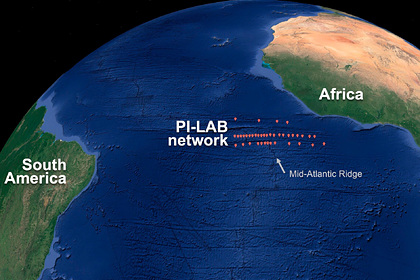
Scientists at the University of Southampton in the UK have discovered an unusual geological phenomenon that is expanding the Atlantic Ocean. This is reported in an article published in the journal Nature.
Seismologists installed 39 seismometers at the bottom of the Atlantic Ocean as part of the PI-LAB (passive display of the lithosphere and asthenosphere boundary) and EURO-LAB (experiment to explore the rheological boundary of the oceanic lithosphere and asthenosphere). This data represents the first large-scale high-resolution image of the mantle beneath the Mid-Atlantic Ridge.
The continental plates of North and South America are known to move away from Europe and Africa at a rate of four centimeters per year. Between these continents lies the Mid-Atlantic Ridge, an area of plate divergence, under which magma melt is injected. The moving force of the divergence of the Atlantic plates has long been a mystery, since the Atlantic Ocean is not surrounded by subduction zones, in which continental plates sink into the mantle.
Scientists managed to display changes in the structure of the Earth's mantle near depths of 410 and 660 kilometers. This made it possible to confirm the upwelling in the mantle from a depth of 600 kilometers. It is believed that usually upwellings below the ridges occur at much shallower depths, about 60 kilometers.

